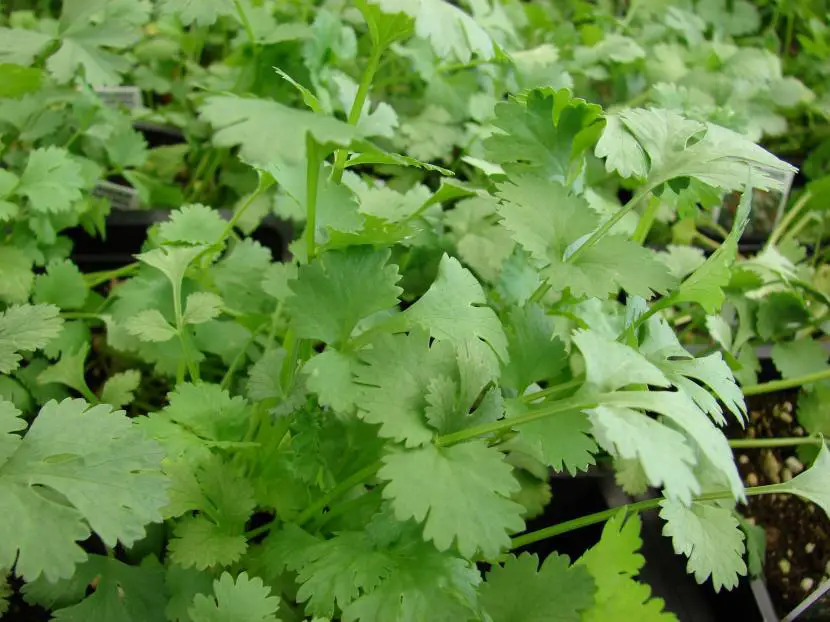
This is a plant that is very reminiscent of parsley, in fact, one of the common names is precisely Chinese parsley. Its cultivation and maintenance is very simpleand having a rapid growth, we can be sure that in a matter of a few weeks we will have it available to season our favorite dishes.
Do you want to know how coriander is grown?

The first thing to do is, of course, acquire the seeds. Normally you will find them for sale in any agricultural warehouse or in nurseries, especially during the ideal season for sowing: spring. You will see that they are oval in shape, light brown in color, and with a diameter of no more than 1 centimeter. To verify that they are viable, it is highly recommended put them in a glass of water and leave them there for 24 hours. After that time, you can do two things:
- Discard the seeds that have been floating, or …
- Prepare two different seedbeds: one for those that we know will germinate without problems, and another with which we are not sure.

The coriander is not demanding in terms of type of substrate. Thus, you can use universal earth and even opt for something even cheaper: your own garden landwhich you will mix with a little mulch and perlite (or any other similar material) so that it does not compact and the water drains quickly. This will prevent your young plants from being affected by having a flooded substrate.
As we said, it is a fast growing plant, but it also has a fast germination. In 7-10 days those who are more awake will begin to appear if they are located in a place where they have as much direct light as possible; otherwise, they will take longer and it is likely that their development will not be adequate. Once they reach a height of between 10 and 15 centimeters you can plant them in individual pots or directly in your green corner.

